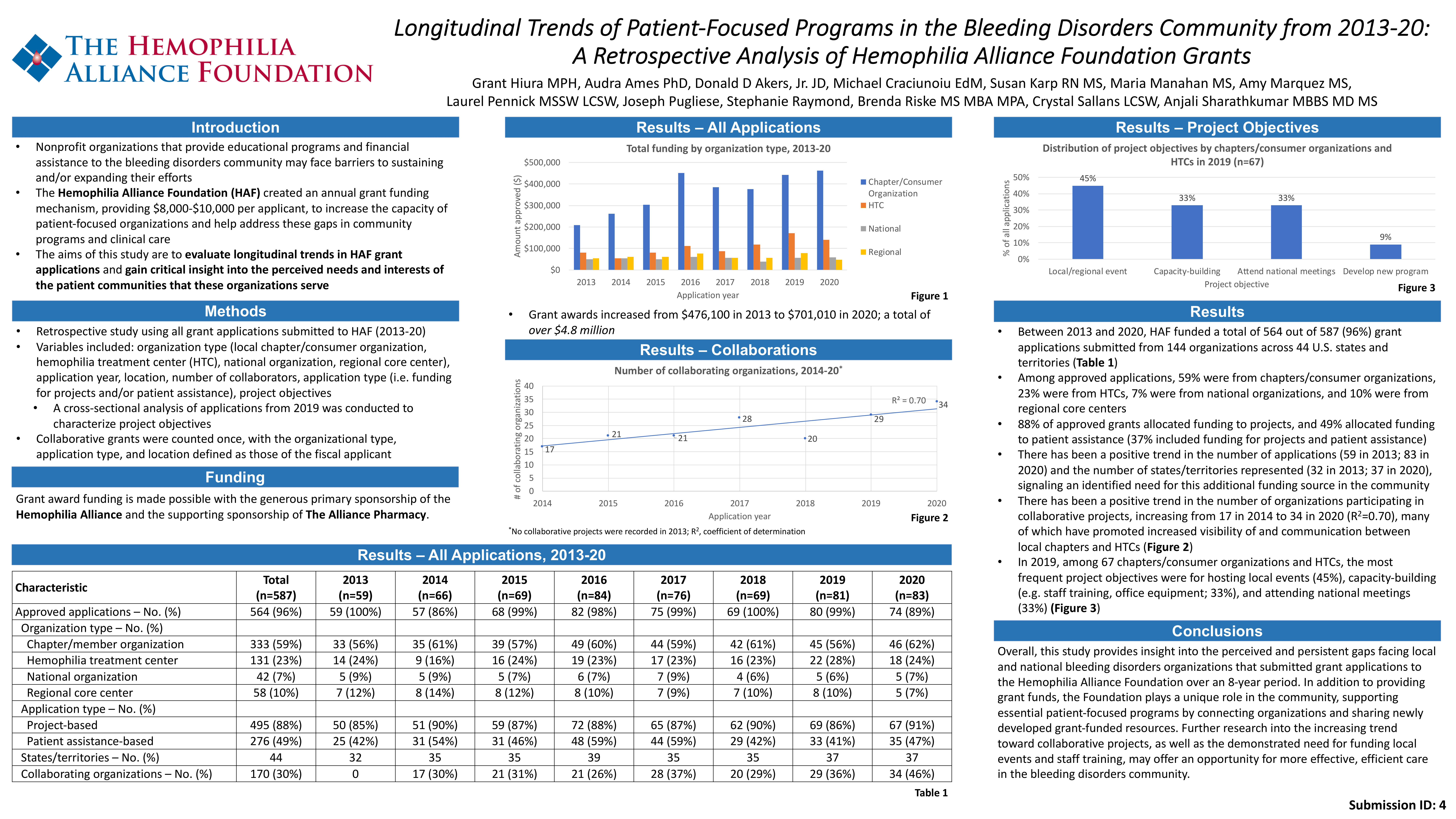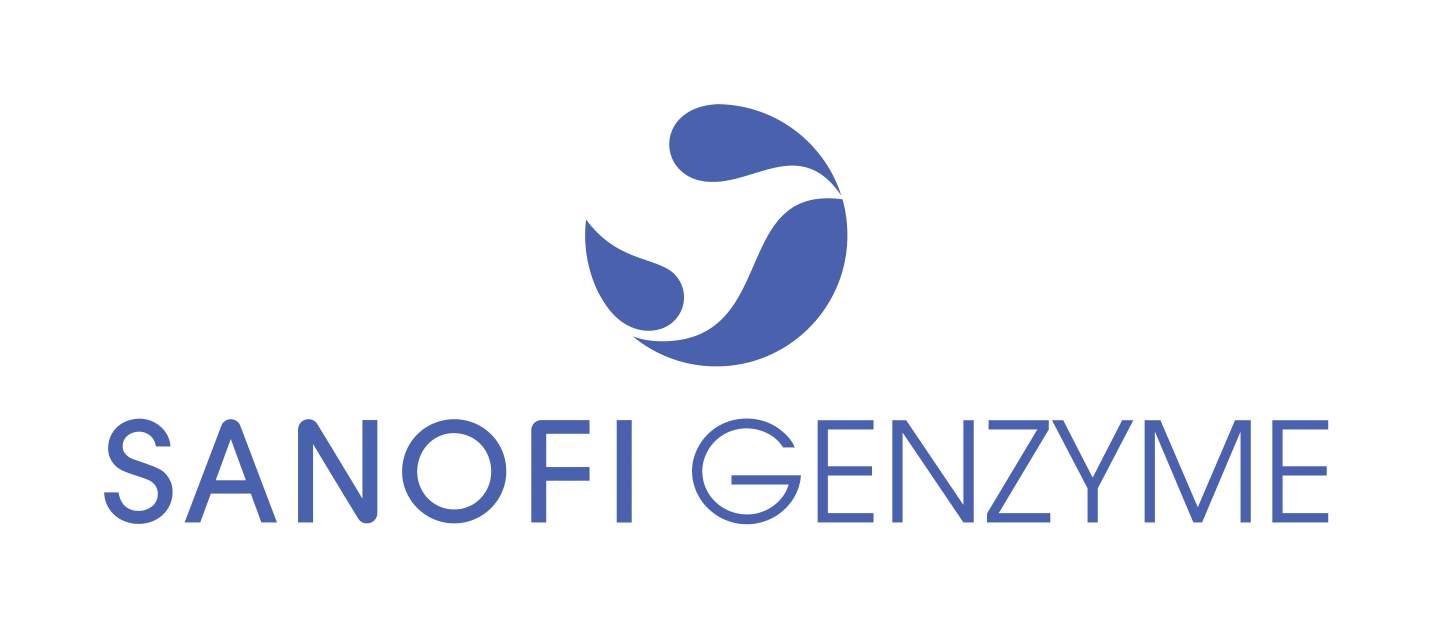National Hemophilia Foundation (NHF) - Posters
Longitudinal trends of patient-focused programs in the bleeding disorders community from 2013-20: a retrospective analysis of Hemophilia Alliance Foundation grants |
|
|
|

|
Objective:
Nonprofit organizations that provide educational programs and financial assistance to the bleeding disorders community may face barriers to sustaining and/or expanding their efforts. To help address these gaps in community programs and clinical care, the Hemophilia Alliance Foundation (HAF) created an annual grant funding mechanism that provides $8,000-$10,000 per applicant to increase the capacity of patient-focused organizations. The aims of this study are to evaluate longitudinal trends in these grant applications and gain critical insight into the perceived needs and interests of the patient communities that these organizations serve.
Methods:
HAF grant applications submitted between 2013 and 2020 were retrospectively assessed. The following variables were extracted and harmonized for use in longitudinal analyses: organization type (local chapter/member organization, hemophilia treatment center (HTC), regional core center, or other national organization), application year, geographic location, collaborators, and project descriptions. For collaborative grants, the organizational type was defined as that of the fiscal applicant. Through secondary analysis of project descriptions, indicator variables were created to identify application types (project-based and/or patient assistance-based) and project objectives.
Summary:
A total of 144 organizations submitted 587 grant applications from 44 U.S. states and territories from 2013-20. Among 564 (96%) approved applications, 333 (59%) were from chapter/member organizations, 131 (23%) were from HTCs, 58 (10%) were from regional centers, and 42 (7%) were from national organizations. By application type, 495 (88%) applications allocated funding to projects and 276 (49%) applications allocated funding to patient-assistance programs. The HAF has seen a consistent growth in both the number of applications (59 in 2013; 83 in 2020) and states represented (32 in 2013; 37 in 2020) per year, signaling an identified need for this additional funding source within the community. There has been a positive trend in the number of organizations participating in collaborative projects (17 in 2014; 34 in 2020), many of which have promoted increased visibility of and communication between local chapters and HTCs. In exploratory cross-sectional analyses of 67 chapters/member organizations and HTCs in 2019, 45% of applications allocated funding for hosting local events, 33% for attending national meetings (e.g. the National Hemophilia Foundation’s Bleeding Disorders Conference), 33% for capacity-building (e.g. office equipment, staff training), and 9% for developing new programs.
Conclusions:
This study provides unique insight into the perceived and persistent gaps facing bleeding disorders organizations at the local and national levels that have submitted grant applications to the HAF over an 8-year period. With organizations continuing to demonstrate a need for additional funding for patient-focused projects and assistance programs, further research into the increasing trend toward collaborative grant applications may offer an opportunity for more effective and efficient care in the bleeding disorders community.



